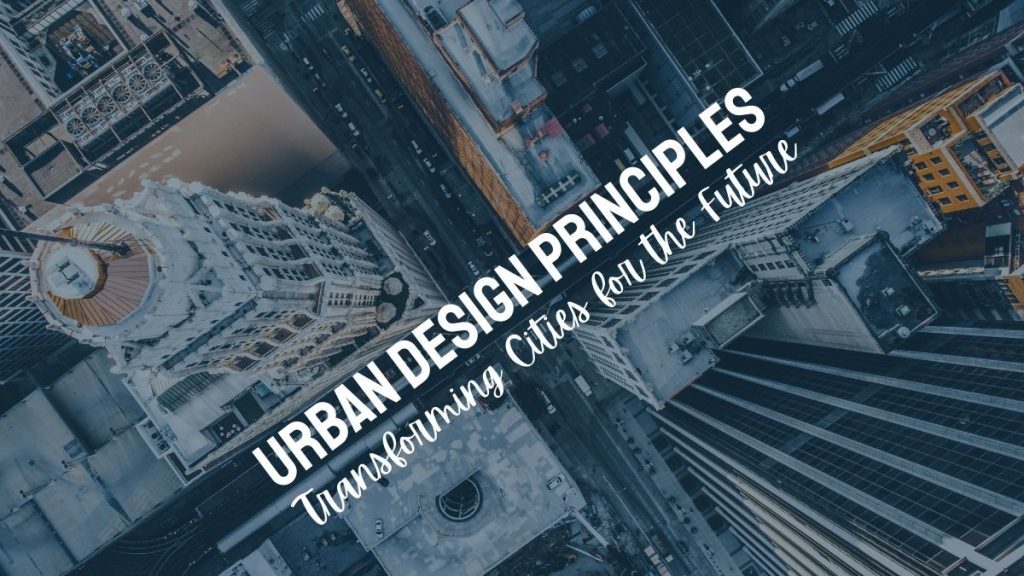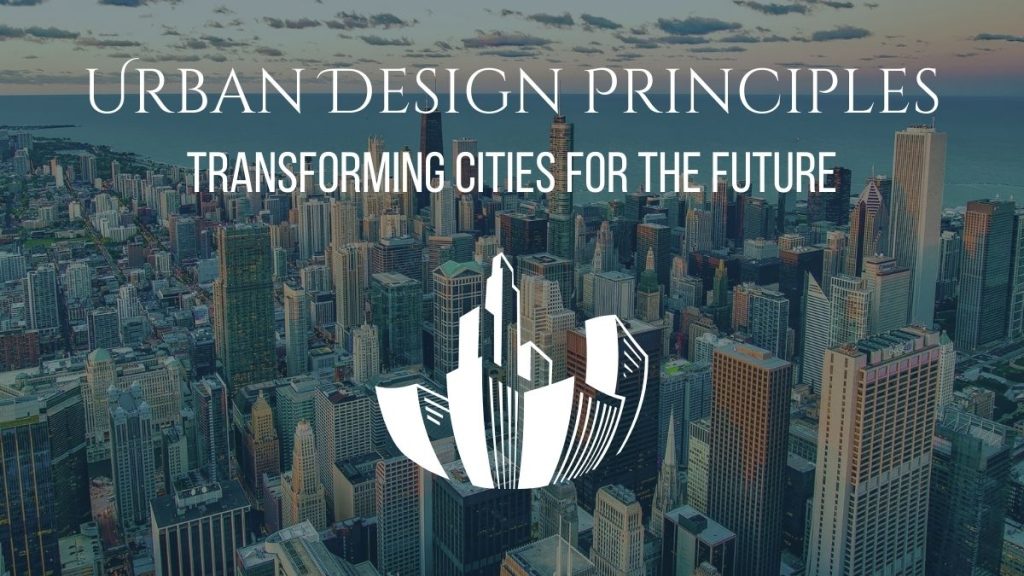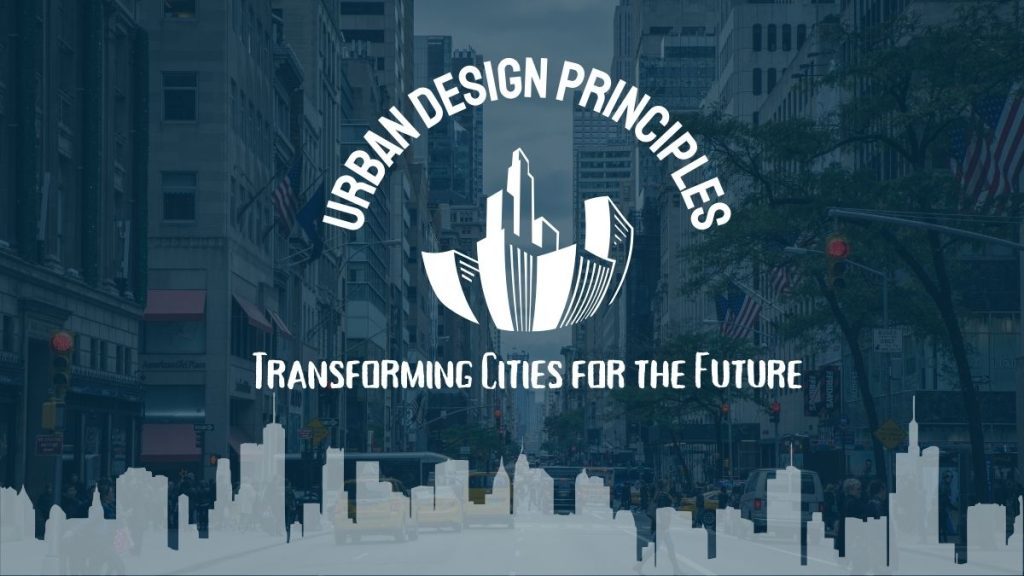Urban design principles focus on creating functional, attractive, and sustainable urban spaces. They emphasize connectivity, diversity, and human-scale development.
Urban design principles are essential for shaping vibrant and livable cities. These principles prioritize pedestrian-friendly environments, mixed-use developments, and accessible public spaces. They aim to enhance social interaction, economic vitality, and environmental sustainability. Effective urban design integrates green spaces, efficient public transportation, and diverse architectural styles.
Good urban design also considers the cultural and historical context of the area. By fostering a sense of community and belonging, urban design principles contribute to the overall quality of life. They guide planners and architects in creating urban areas that are both practical and aesthetically pleasing.
Related Article: Smart City Design: Transforming Urban Living for the Future

Related Article: Urban Design Ideas: Transform Your Cityscape with Innovation
Sustainable Urban Planning
Sustainable urban planning is the art of designing cities to be eco-friendly. It aims to balance environmental, social, and economic needs. The goal is to create livable, resilient, and sustainable urban environments. Below, we explore the principles of green spaces and eco-friendly transportation.
Green Spaces
Green spaces are vital for urban sustainability. They improve air quality and provide recreational areas. Parks, gardens, and green roofs are examples. These spaces help reduce urban heat islands. They also support biodiversity and enhance mental well-being.
Here are some benefits of green spaces:
- Improves air quality
- Reduces noise pollution
- Offers recreational areas
- Supports biodiversity
- Enhances mental well-being
Cities can integrate green spaces into their urban fabric. Vertical gardens and green rooftops are innovative solutions. These spaces make cities more attractive and livable.
Eco-friendly Transportation
Eco-friendly transportation reduces pollution and traffic congestion. It includes public transport, cycling, and walking. These modes of transport are energy-efficient and reduce carbon footprints.
Here are some types of eco-friendly transportation:
| Type | Benefits |
|---|---|
| Public Transport | Reduces individual car use, lowers emissions |
| Cycling | Zero emissions, promotes health |
| Walking | Zero emissions, promotes physical activity |
| Electric Vehicles | Lower emissions, reduces fossil fuel use |
Urban planners can design bike lanes and pedestrian zones. Electric buses and car-sharing programs are also effective. These initiatives encourage people to choose greener transport options.
Related Article: Urban Planning Trends: Transforming Cities for a Sustainable Future

Credit: energyinnovation.org
Related Article: Green Building Techniques: Eco-Friendly Design for Modern Living
Smart City Technologies
Smart City Technologies are revolutionizing urban design by integrating advanced systems. These technologies aim to improve city life through innovation and efficiency. By utilizing modern tools, cities can become more sustainable, livable, and responsive to their residents’ needs.
Iot Integration
The Internet of Things (IoT) connects devices to the internet. This network includes sensors, cameras, and smart meters. These devices collect and share data in real-time. IoT integration helps manage urban infrastructure more effectively.
For example, smart streetlights adjust brightness based on activity. This reduces energy consumption and improves safety. Another use is in waste management. Smart bins notify when they are full, optimizing collection routes. This leads to cleaner streets and lower costs.
Public transportation also benefits from IoT. Real-time tracking of buses and trains can improve scheduling. Passengers receive updates on delays, making travel more convenient.
Data-driven Decision Making
Smart cities rely on data for decision-making. Data-driven decision making improves efficiency and service delivery. Cities collect data from various sources such as sensors, cameras, and social media.
This data helps in monitoring traffic, pollution, and energy use. For example, traffic data can be analyzed to reduce congestion. Adaptive traffic signals change based on real-time conditions. This reduces travel time and emissions.
Data also enhances public safety. Surveillance cameras and sensors detect unusual activities. Authorities can respond quickly to emergencies. Predictive analytics help in crime prevention by identifying high-risk areas.
| Smart City Aspect | Benefits |
|---|---|
| Transportation | Improved scheduling, reduced delays |
| Energy | Lower consumption, cost savings |
| Waste Management | Efficient collection, cleaner streets |
| Public Safety | Quick response, crime prevention |
Smart city technologies are transforming urban environments. By integrating IoT and utilizing data, cities can become more efficient. This leads to improved quality of life for residents.
Related Article: Green Urban Design: Transforming Cities for a Sustainable Future

Related Article: How Does Architecture Help Society: Shaping Our World
Community-centric Design
Community-Centric Design focuses on creating spaces that serve the community. These designs prioritize the needs and desires of local residents. They aim to foster a sense of belonging and engagement. Let’s explore two essential aspects of this approach: Public Engagement and Inclusive Spaces.
Public Engagement
Public engagement is crucial for a successful community-centric design. This involves actively involving residents in the planning process. It ensures that their voices are heard and their needs are met.
- Surveys and Questionnaires: Gather feedback from community members.
- Town Hall Meetings: Hold open forums for discussion and ideas.
- Workshops: Organize hands-on activities to brainstorm solutions.
Engaging the public helps in building trust and transparency. It also ensures that the final design truly reflects the community’s needs.
Inclusive Spaces
Inclusive spaces are designed to be accessible to everyone. This means considering the needs of people with disabilities, the elderly, and children. It also means creating spaces that promote social interaction.
| Feature | Description |
|---|---|
| Ramps and Elevators | Ensure mobility for wheelchair users. |
| Wide Pathways | Allow easy movement for all. |
| Seating Areas | Provide resting spots for the elderly and children. |
| Playgrounds | Offer safe play areas for kids. |
Creating inclusive spaces enhances the quality of life for all residents. It fosters a sense of community and belonging.
Resilient Infrastructure
Urban design principles focus on creating cities that can withstand challenges. Resilient infrastructure ensures that cities remain functional during crises. This section explores key aspects of resilient infrastructure.
Climate Adaptation
Climate change affects cities worldwide. Urban design must adapt to these changes. Climate adaptation involves planning for extreme weather. Cities need to manage heatwaves, heavy rains, and rising sea levels.
Consider these strategies for climate adaptation:
- Plant more trees to provide shade and reduce heat.
- Build green roofs to absorb rainwater and reduce heat.
- Use permeable materials for pavements to manage stormwater.
These steps help cities cope with climate change. They make urban areas more livable and sustainable.
Disaster Preparedness
Disasters can strike at any time. Cities must be ready to handle them. Disaster preparedness involves planning and resources. This ensures a quick response and recovery.
Key elements of disaster preparedness include:
- Developing emergency response plans.
- Training residents and workers on safety measures.
- Building strong communication systems for alerts.
Prepared cities save lives and reduce damage. Investing in disaster preparedness is essential for urban resilience.
The table below highlights some important measures for both climate adaptation and disaster preparedness:
| Climate Adaptation Measures | Disaster Preparedness Measures |
|---|---|
| Plant trees | Create emergency plans |
| Build green roofs | Train residents and workers |
| Use permeable pavements | Establish communication systems |
These measures enhance the resilience of urban infrastructure. They help cities thrive despite challenges.
Related Article: Mixed Use Development: Unlocking Urban Innovation and Growth

Related Article: What Characteristics Identify Early Modern Architecture – A Complete Guide
Mixed-use Development
Mixed-use development is transforming urban landscapes. It combines residential, commercial, and recreational spaces. This approach enhances community living and reduces travel time. Residents enjoy a more integrated and convenient lifestyle.
Live-work-play Environments
Live-work-play environments are essential in mixed-use development. These areas provide homes, offices, and leisure activities in one location. People can live, work, and play without long commutes. This setup promotes a balanced and fulfilling lifestyle.
Benefits of live-work-play environments include:
- Reduced traffic congestion
- Enhanced social interactions
- Better work-life balance
These environments foster community engagement and local business growth. Residents feel more connected and involved in their surroundings.
Zoning Flexibility
Zoning flexibility is vital for successful mixed-use development. It allows for diverse building uses within a single area. This flexibility adapts to changing community needs and market demands.
Key aspects of zoning flexibility include:
- Adaptive reuse of buildings
- Encouraging diverse architectural designs
- Promoting sustainable development practices
Flexible zoning encourages creativity and innovation in urban design. Communities benefit from unique and vibrant spaces.
Below is a table summarizing the advantages of zoning flexibility:
| Advantage | Description |
|---|---|
| Adaptive Reuse | Repurposing old buildings for new functions |
| Diverse Designs | Encouraging different architectural styles |
| Sustainability | Promoting eco-friendly practices |
Embracing zoning flexibility leads to dynamic and sustainable urban spaces. It ensures long-term community resilience and growth.

Credit: www.researchgate.net
You may also read: Architectural Design Concepts: Unleash Creativity
Conclusion
Urban design principles shape vibrant, sustainable cities. They improve quality of life, connectivity, and environmental health. By prioritizing community needs and green spaces, urban areas become more livable. Implementing these principles ensures a balanced, thriving urban ecosystem. Embrace thoughtful urban design to create harmonious, resilient, and inclusive cities for future generations.
You may also read: Small Modern House Interior Design: Transform Your Space Today

Pingback: Green Urban Design: Transforming Cities for a Sustainable Future - SpaceArc